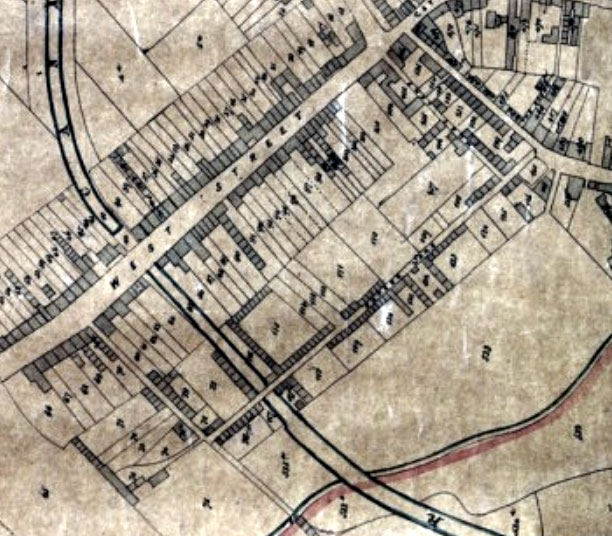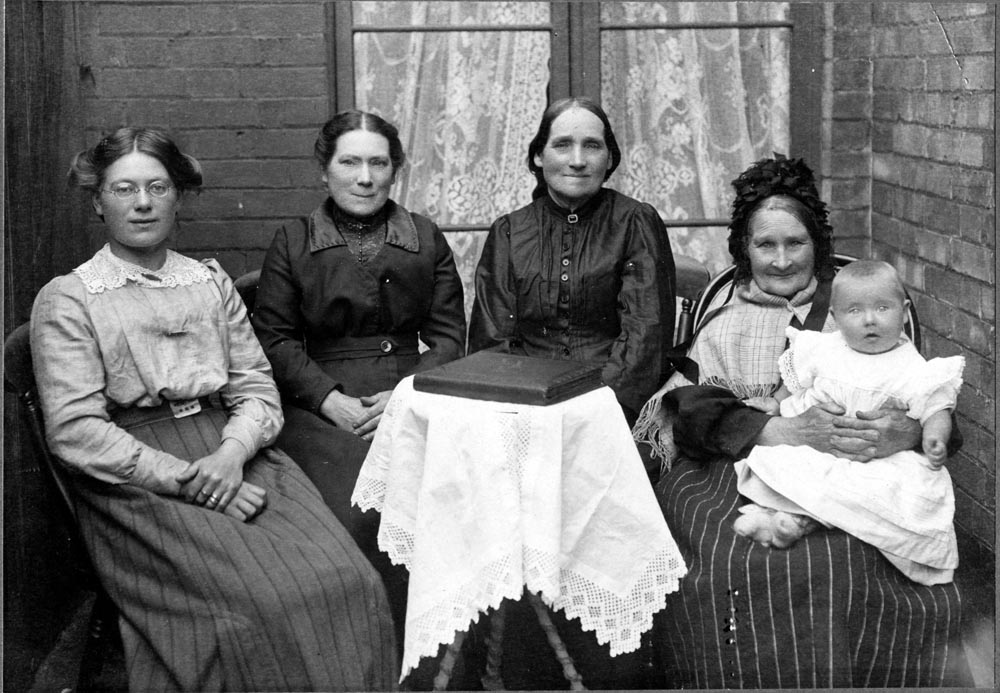Louisa Phillips was the matriarch of a dynasty of hardworking and resilient Bridgwater women.
Louisa was born in North Petherton in 1824, the illegitimate daughter of Betty Jennings. Betty Jennings was the daughter of agricultural labourer Henry Jennings and his wife Ann, nee Thomas. When Louisa was two years old, her mother married Charles Trott, but Betty died only a couple of years after that, and Louisa was probably brought up by her grandparents Henry and Ann, and may have come to think they were her parents.
The next record for Louisa is when she had her first child, Elizabeth Jane, born in the Bridgwater Union Workhouse in January 1845. The father, named on Elizabeth’s birth certificate, was John Chedzoy, but he abandoned Louisa and left Bridgwater. When she had recovered from the birth, Louisa left the workhouse and lived in a rented room with her baby. They were lucky to have avoided the cholera epidemic in 1849 which ravaged the poorer area of Bridgwater where they were lodging.

Louisa had a son, George, born in 1850, and by 1851 she was lodging in Ropers Lane with her two small children. Louisa was an independent woman, who supported herself and her children by working as a washerwoman. She seems to have gone into the workhouse only around the birth of each of her children, when she would not have been able to work.
Louisa had another two illegitimate children in the Bridgwater workhouse, Thomas in 1853 and Charles in 1855. Then, after supporting herself and her children for 12 years, Louisa married labourer John Phillips in Holy Trinity Church, on the 2nd of August 1857. John was born in Exeter in Devon, but must have come to Bridgwater for work. Louisa gave her father’s name as Henry Jennings on the marriage register, but this was in fact her grandfather’s name. Her grandfather had died just two months earlier at the great age of 92. He died in the workhouse and was buried in the pauper’s section of Wembdon Road Cemetery. His strength and endurance were passed on to his grand-daughter and great grand-daughter.
Louisa was already pregnant at her wedding and she had her next child, John, four months later, in the relative comfort of her own home. Marion was born in 1860, followed by another four – Emily 1862, Hannah 1864, Samuel 1866 and Louisa junior in 1868. Sadly young Charles Jennings died in 1866, aged only 9. Louisa and John continued to live in Ropers Lane (which was re named Albert Street in the 1850s) for the rest of their lives.

John Phillips changed his occupation during the 1860s, and found work as a tile maker. In 1871, Louisa’s son Tom Jennings was still at home and also working as a tile maker, while 13-year-old John Phillips junior was working in a brickyard, no doubt with his father and step brother. 9-year-old Emily and 7-year-old Hannah were described as scholars, they could have been attending the nearby West Street School.
In 1881, Louisa was living and working in a general grocer's shop in Albert Street, very close to, and possibly in the building of the former Jolly Sailor Inn. Only the youngest three children were still at home, and two of those were working and contributing to the household income. 17-year-old Anne/Hannah was a domestic servant and 15-year-old Samuel was working at the oil and cake mill at the docks. 13-year-old Louisa junior had left school but not yet found employment. The youngest children eventually left home and by 1891 John and Louisa were on their own, which must have felt strange after such a crowded family life. John was not able to afford to retire though, and he found work as a road labourer, even though he was well in to his seventies.
In July 1906 John died, aged about 83. He was worn out after a life of hard and heavy work, but he had managed to provide for his and Louisa’s large family. He was buried in Wembdon Road Cemetery (Anglican section M, row 1, plot 3).
Louisa then lived on her own at Number 3 Court, Albert Street. She remained close to her eldest daughter Elizabeth, and was photographed with Elizabeth and her daughter Rhoda in 1914.

The photograph shows five generations of Jennings women, all strong and resilient in the face of difficulty. The clothes of the women reflect their relative ages, as it was usual for women to retain the styles of their younger days into later life. The three older women were wearing black, although none of them were recently bereaved.
From left to right, Rhoda junior, the youngest adult, has a typically Edwardian look, with a loose blouse tucked in to a high waistband with a tight belt. The blouse has an elaborate lace collar and the sleeves are fairly close fitting. Her striped woollen skirt is also quite narrow. Her mother Rhoda senior, next left, is wearing a fairly loose jacket which is tightened in to the waist with a belt and which has a plain collar and close fitting sleeves. Her skirt is also fashionably narrow, she had four daughters to remind her to keep her wardrobe up to date.
Seated on Rhoda senior’s left is her mother Elizabeth who is wearing a more old fashioned blouse, with fuller sleeves and a lower waistline. On Elizabeth’s left is her 90 year old mother Louisa, who has kept to a much older fashion, with a voluminous striped woollen skirt and a blouse with very full sleeves[i]. Louisa also was wearing a mourning cap decorated with ribbon bows which was fashionable back in the 1880s. Louisa is smiling out of the photograph with a twinkle in her eye. She is proudly holding her great great grand-daughter Gertrude Mead in a firm and capable clasp.
This was the last photograph taken of Louisa as she died a few months later, shortly before Christmas in 1914. Whoever registered her death got her age very wrong as she was about 90, not 77, but that may show how lively she still seemed in old age. Louisa was buried with her husband John Phillips in Wembdon Road Cemetery on Boxing Day 1914.
Clare Spicer and Jill Trethewey 08/07/2025
[i] Both Rhoda junior and Louisa are wearing striped woollen skirts, and Louisa is wearing a plaid woollen shawl. These could have been fabrics produced locally, for example, Tonedale Mill in Wellington, Somerset was once the largest woollen mill in in the West Country.
